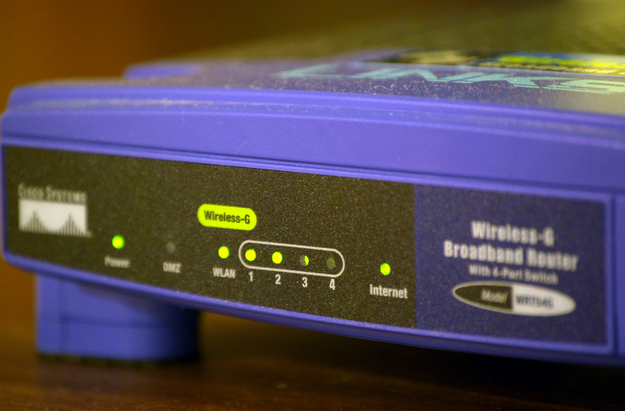
The Linksys WRT54G is the stuff of geek legend. First introduced in late 2002, the WRT54G was one of the first pieces of home networking gear to use Linux as the foundation of its firmware, and, by summer of the next year, Linksys had been forced to release the GPL-based source code for the device, immediately resulting in hackers the world over soldering together JTAG cables and extending the capability of the unit far beyond anything Linksys had ever intended.
This little $70 purple-and-black-box-that-could quickly developed a reputation for being able to do things that had previously been the realm of enterprise-class equipment that cost hundreds, if not thousands, of dollars more. Whether you’re talking about early forks like the controversial Sveasoft firmware or the more recent, hugely popular DD-WRT, countless budding young nerds — myself included — first cut their teeth on basic networking concepts using WRT54Gs.
So, all that said: for the love of god, please stop telling everyone that needs a new home router that they should buy a WRT54G.
There’s no disputing that the WRT54G was revolutionary and completely changed what could be done with cheap, commodity networking gear for the better, but that happened nearly a decade ago, and the venerable WRT has been surpassed in every way by other hardware in that time.
At the tip of the iceberg is the fact that anything found on a store shelf in the past five years calling itself a "WRT54G" isn’t the same router that made the name famous. Some time in early 2006, Linksys quietly introduced the WRT54G v5. While carrying the same model number and externally identical, the v5 had half the RAM and flash memory of the older units and had switched from a Linux-based operating system to one based on VxWorks. The v5s were plagued with performance and stability issues, and generally sucked all around.

Shortly thereafter, Linksys introduced the WRT54GL, which was little more than a WRT54G v4 with an extra $20 slapped onto the price tag. By this time, however, other manufacturers had noticed the success of the original WRT routers, and released competitors of their own. Buffalo, for example, had introduced the WHR-G54S, which was based on the same basic Broadcom reference design as the old 54Gs (and thus compatible with all the popular third-party firmwares), but at an even lower price point. If you were still buying WRT54G(L)s as late as 2008, you were already stuck in an unfortunate nostalgia trap.
On top of all this, technology hasn’t exactly stood still in the five-plus years since Linksys kneecapped the original 54G. As its very name implies, the WRT54G was introduced right as the 802.11g standard was first being adopted, bringing impressive-for-the-time 54Mbps wireless connection speeds. Today, you can walk into any big box electronics store and pick up a router supporting the (finally ratified) 802.11n standard, giving you up to 450Mbs of throughput, better overall wireless range, and, in many cases, the option to use the less crowded 5GHz spectrum, reducing the headache of keeping a stable connection in areas with a congested wireless spectrum.
Even if you are perfectly content to continue putting along on 11g, the simple truth is that the 54G struggles just to keep up with ever faster home internet connections. In 2002, a 5Mbps internet connection made you the envy of every nerd on your block. Today, ISPs rolling out technologies like FiOS and DOCSIS 3.0 have made home connections well in excess of 20Mbps a reality, and the old WRT54Gs plain don’t have the power to handle the throughput of these faster pipes. I’ll leave trudging through forum posts complaining of poor WAN performance from WRT54Gs as an exercise for the reader, but you shouldn’t have to look hard to find examples of people that were unable to squeeze out every bit their connection had to offer until they replaced their 54G with something newer.
So what’s a good nerd to do?
Personally, I’ve had good luck with Cisco’s E3000 and E3200 series of routers, both of which are simultaneous dual band 802.11n routers that are well-supported by DD-WRT and can be easily found for well under $100. I’ve also heard extremely positive things about Netgear’s WNDR series of routers which explicitly support third-party open-source firmwares. Additionally, The Wirecutter maintains a list of what it considers the best consumer routers available. It's currently recommending Asus’ RT-N56U or the Cisco E2000, depending on budget. At any rate, there are plenty of options out there — good ones too.
But whatever you do, don’t buy a WRT54G today. And geeks, stop telling other people they should.
This post originally appeared at Nerd|Vent, a blog about the sheer frustration of the IT world. Joseph Slaker works in IT.
